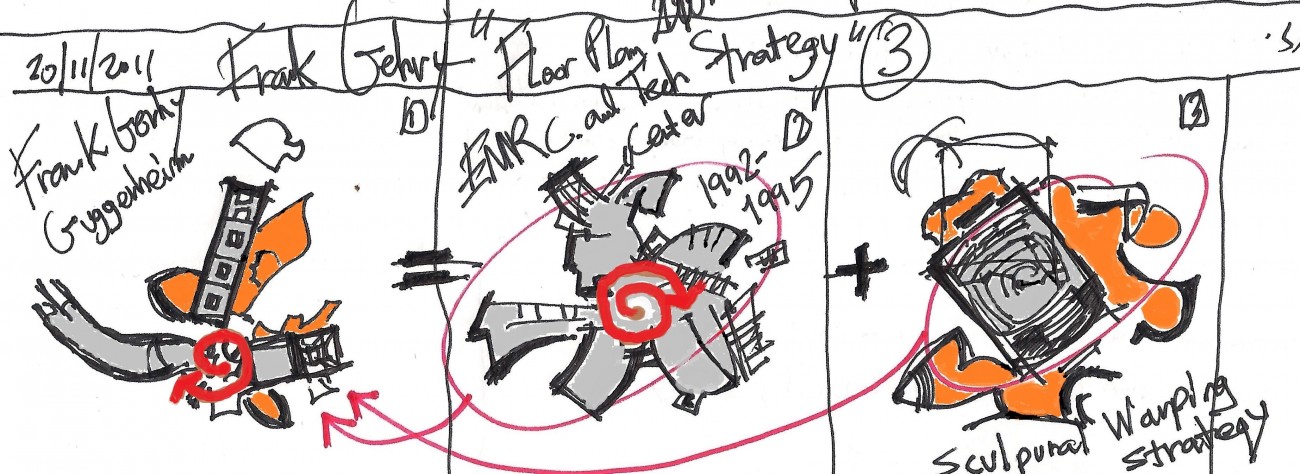Tag archives for: BIM

Featuring the hand sketches of Frank Gehry provides an inside look into Mr. Gehry’s architecture. “I know I draw without taking my pen off the page. I just keep going, and that my drawings I think of them as scribbles. I don’t think they mean anything to anybody except to me, and then at the end of the day, the end of the project they wheel out these little drawings and they’re damn close to what the finished building is and it’s the drawing.” Frank Gehry, FAIA. Because Mr. Gehry’s sketches are original and unique, we thought it fitting to launch our CFAeX Autodesk AutoCAD, Revit, and BIM Certification Exams home page is showcasing his work. The CFAeX.com website has compiled a slideshow for you. View the slide show.


The entire CFA team and I are pleased to announce the completion of the rebranding of our company, social sites, and website. We wanted a fresh new look that better reflects our times and services in a constantly changing world and the professionals we represent. I described CFA to as a 29 year old “start-up” because we have always reacted well to change and our brand should reflect our unique ability and staying power. CFA was successful the year it was created, 1984, and has never looked back.
Special thanks and acknowledgement goes out to our designer Ryan Kovich. Ryan devoted several months of his valuable time and energy studying the creative world of architecture and design and contemplating our brand identity. He took that knowledge and his creative energy to bring us this great new brand. Find Ryan Here.
We would also like to thank our creative editor David Gibbons. David did a tremendous job taking our ideas, filtering out the rhetoric, and providing rock solid content that expresses our brand perfectly. Find David Here.
Finally, we would like to thank our consultants and clients who gave us their valuable input throughout this process. Our rebranding efforts success would not be possible without them.
Would you like to evaluate our new Website? Evaluation Form.
CFA Services
|
aia, Architect, architects, Architectural History, architecture, Architecture Commentary, Architecture Critic, Architecture Design, architecture jobs, Art, Art and Culture, BIM, buildings, Built environment, CAD, carbon-neutral office building, CFA Freelancer Community, CFA Services, Construction, Consulting For Architects, container architecture, Corporate responsibility, David McFadden, design, Design News, Design Technology, eco building, Employment Advice, Employment News, Engineering, Featured Architecture + Design Blog, Featured Projects, Freelancer tips, government architecture, Green Architecture, green building, Uncategorized
|
I have said numerous times lately that the lessons of this prolonged recession and necessity to achieve efficiency’s to survive will be a game changer for BIM acceptance in AEC firms. Everyday I see evidence supporting that. Here is a post from a firm in Salem, MA that agrees that BIM is key in moving forward and competing:

Photo-realistic BIM Rendering of the Salem State College, Weir-Stanley Building Music Rehearsal Space
If you haven’t done it by now, you better get to it! Or fall so far behind you may never be able to catch up. Bite the BIM bullet. It’s the future of the building industry and the future is now or just around the corner. Our firm swallowed the BIM pill way back in 2003; a year after Revit was first introduced to the market by Autodesk. What we saw then was what other industries have been doing for years: virtually prototyping and testing designs prior to fabrication. Economics and compute power had the practice relegated to big business and complex industries, but now the industrial evolution has finally availed these tools to the AEC Industry that allow us to rise up and shed our Neanderthal trappings. Those who will not adapt and wait, or dismiss it as a passing fad, will surrender to Natural Selection ending up in their own version of the La Brea Tar Pits. What BIM allows us to do is create buildings in the same way that we think about them; as visualized complete projects. We don’t think in plans, elevations, sections and details. These methods deconstruct the total visualized idea into two dimensional components simply to communicate complexities of the idea to someone else or to allow us to coordinate others’ work into our complex idea.
Full article via Winter Street ArchitectsBlog











